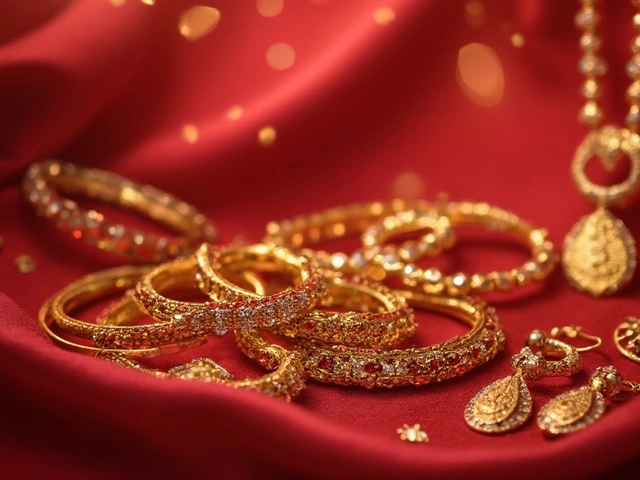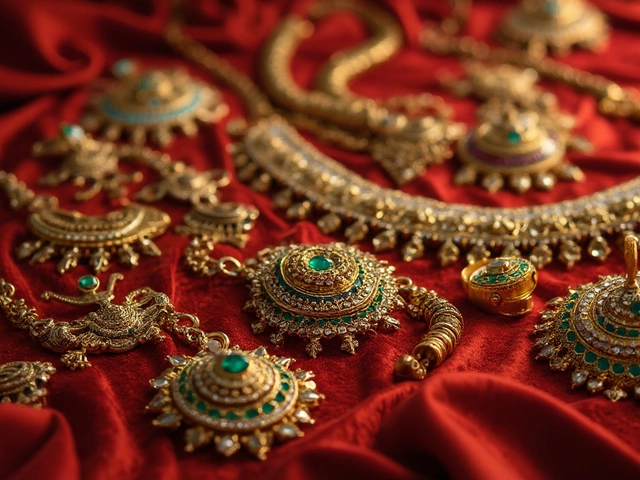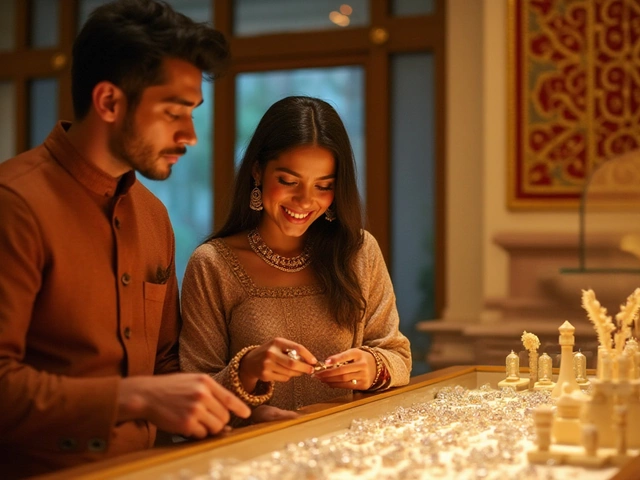Jewelry Symbols Explained: What Your Pieces Really Say
Indian jewellery isn’t just about sparkle; each piece carries a story. Whether you’re picking a bangle for a wedding or checking a gold stamp, knowing the symbols helps you choose with confidence.
Take a quick look at the most talked‑about symbols. Black bangles, black beads, the numbers 875 on gold and 833 on silver—these aren’t random marks. They signal tradition, status, or even a promise.
Common Color and Material Symbols
Black bangles are often linked to protection and strength. In many regions, wearing them wards off negativity and signals a bold fashion statement. If you’re new to the trend, start with a thin cuff; it adds edge without feeling heavy.
Black beads in a mangalsutra carry a similar vibe. They represent longevity and the bond between partners. Modern designs mix black onyx with gold or diamonds, keeping the ancient meaning while staying fresh.
875 on gold means the piece is 21‑karat, also called 875 purity. It’s a high‑grade gold that’s softer than 22K but still valuable. Look for the BIS hallmark to confirm the stamp; it guarantees the metal meets Indian standards.
833 on silver translates to 83.3% pure silver, known as “sterling” in many markets. This mark assures you’re not getting a plated item. When buying, weigh the piece and compare it to a known genuine item for extra peace of mind.
Personal & Cultural Symbols
The mangalsutra itself is a powerful symbol of marriage. Today’s designs range from traditional gold chains to minimalist silver pieces. Choose a style that reflects your partner’s taste—some prefer a simple black bead, others love a diamond‑lined pendant.
Nose studs often signal cultural identity. In many Indian families, a small nose pin marks a rite of passage. If you’re curious, pick a flat‑back stud that stays comfortable during daily wear.
Even the color of your outfit interacts with jewellery symbols. Gold shines best with warm hues like maroon or deep green, while silver pairs well with cool blues or whites. Matching colors can amplify the intended meaning of your accessories.
When you understand these symbols, shopping becomes less about guesswork and more about meaning. Next time you see a black bangle, you’ll know it’s not just a fashion piece—it’s a token of protection. And when you spot 875 stamped on a ring, you’ll recognize the high purity behind the sparkle.
Use this guide as a quick reference. Spot a symbol, recall its story, and decide if it fits your style or the occasion. Indian jewellery is a living language; the more you read it, the richer your collection becomes.
The History of the Kirpan: A Symbol of Sikh Faith
The Kirpan is more than just a ceremonial dagger; it represents a profound faith and dedication for Sikhs. Originating over 300 years ago, this emblem of courage and self-respect ties deeply with the principles of Sikhism. Understanding the Kirpan involves diving into its historical context, spiritual significance, and legal standing in today's world. This article will shed light on these facets and more, offering a richer appreciation for this distinctive symbol.





